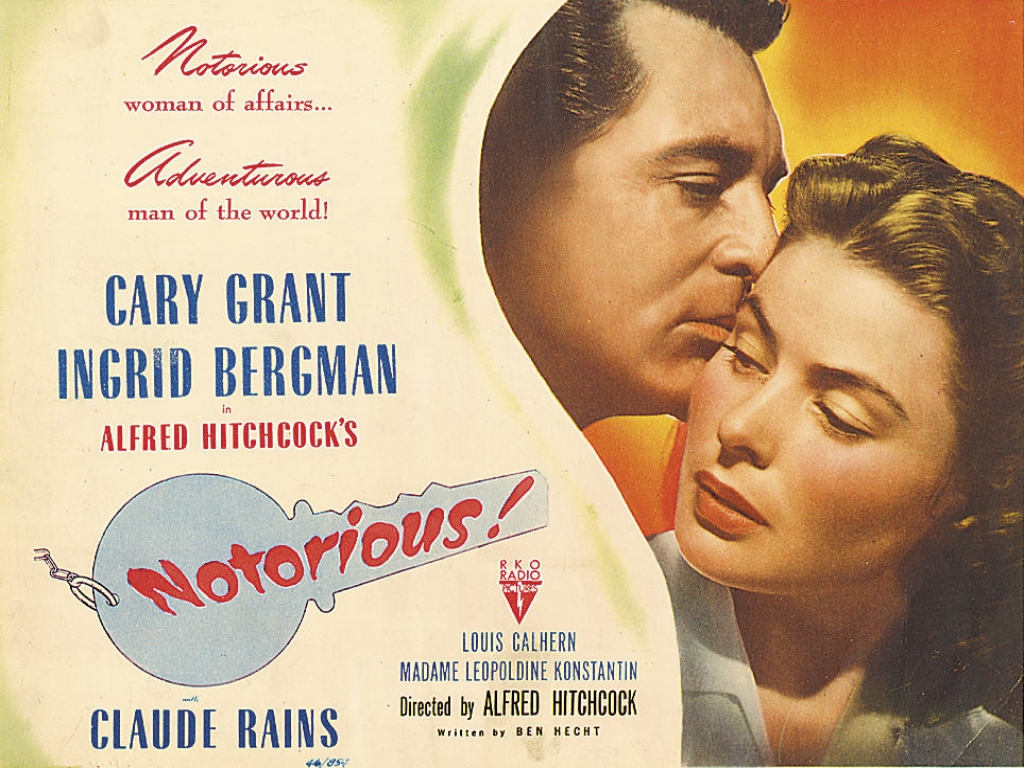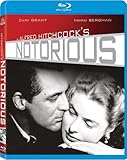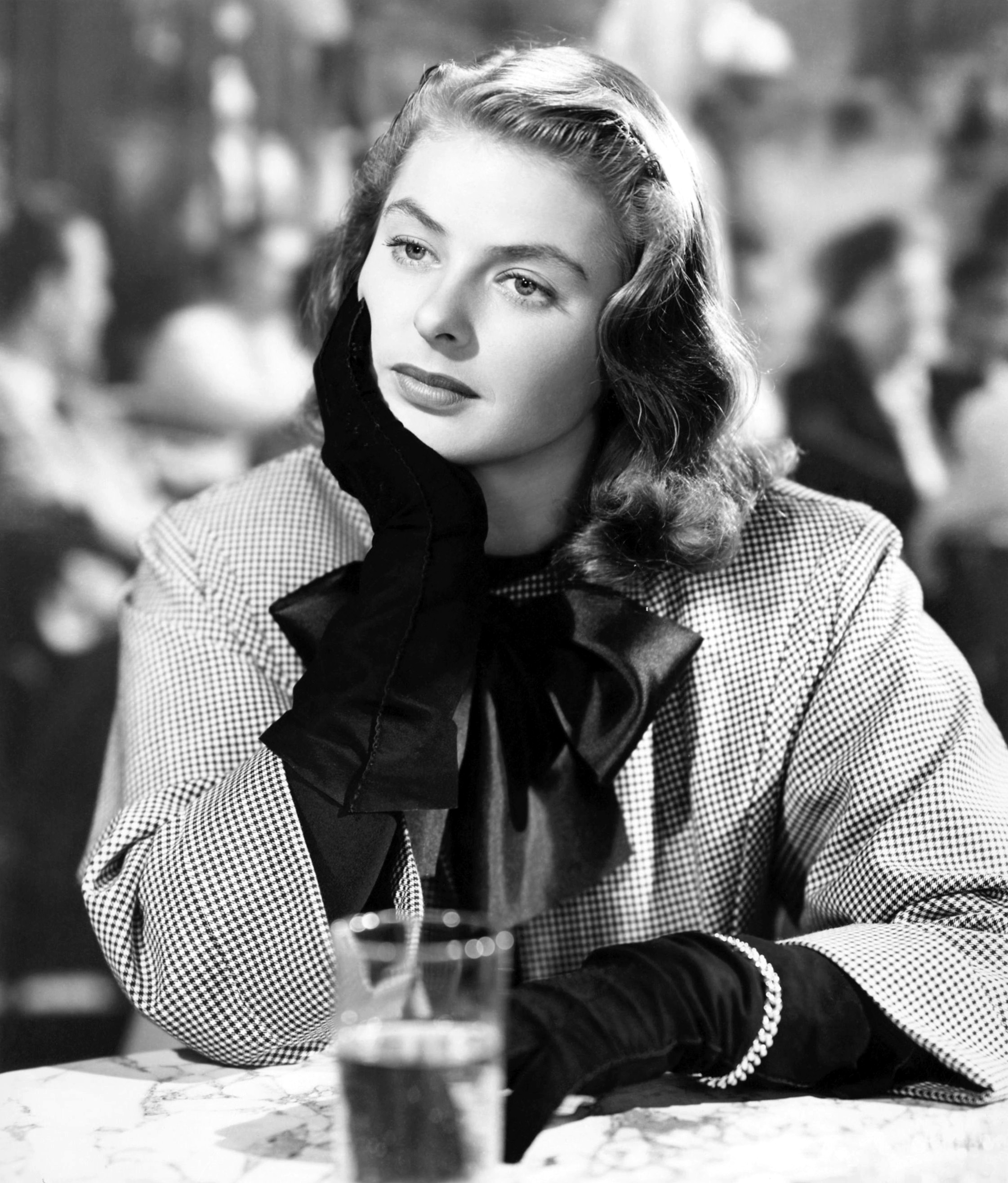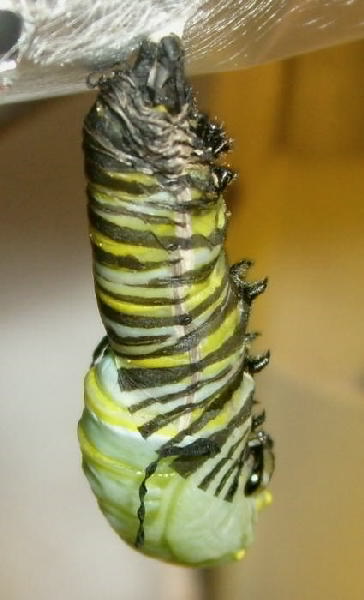TMC is showing Hitchcock's Notorious tonight. I would very much like to go on and on about why I think Ingrid Bergman is so fantastic in this movie. But I'll try to keep it to a brief intro, for those of you who may not have seen this movie. (Yes, some Notorious virgins do exist).

One of many movie posters for Notorious
(Image from The Arts Desk)
Most of us know Ingrid Bergman best from Casablanca, where she plays the uber-good, most-sought-after, fighting-on-the-good-side, love-of-two-men's-lives. Coming from that perception of her, to see her in Notorious, it's kind of a shock. Because her character, Alicia Huberman, is a bad girl.
When the movie begins, her father has been convicted of being a spy for the Nazis. She reacts to this information not with the usual, oh-woe-is-poor-dramatic-me Hollywood response, but by getting loopily sloshed. When was the last time you saw a woman in a Golden Era movie getting bombed on screen?
Not only does she get trashed, she does so with such sarcastic aplomb, the only person who could be her equal would be Cary Grant. Oh, wait, guess who shows up!
Her performance is so rich and complex--ah, what the heck, I'll just show you what I mean.
Not only is she free with the bottle, she's also had a few, um, boyfriends. If I understand the above scene correctly, the old guy at the right is proposing to be her sugar daddy, and she's considering it. No pure-as-the-Ilsa-driven-snow here.
The meat of the story is that Cary Grant's character, Devlin, is a government agent and he wants Alicia (Bergman) to spy on her father's Nazi friends in Rio. Of course when you're a woman, you're not just a spy, you have to be a seductress. Her main job is to seduce the man leading her father's friends, played by Claude Rains. (You know him from Casablanca, too. "I'm shocked, shocked to find that gambling is going on in this establishment.")
So the government men--and Devlin--are assuming that since she's had a few sexual partners in the past, she wouldn't mind faking it with one more guy. Except Devlin has already kind of fallen for her. Nothing like a little high-speed drunk swerving to make you fall in love with a woman.

Bergman also does a stellar hangover.
(Still from The Girl with the White Parasol)
But Devlin also knows about her "seductive" past as well as the seducing she's supposed to do, so he's all bitter and snarky about it. Every time he makes unkind remarks, she smarts but tries not to let him see. This is because she is in love with him and is actually trying to turn over a new leaf after having learned of her father's death. But since Devlin has told her what her assignment is and says he did not protest to his superiors on her behalf, she's embarked on a self-destructive, why-the-hell-not path. They both punish each other for the fact that she actually goes through with the plan of seduction.
The result is such wonderfully sarcastic lines from her as: "Every time you look at me, I can see [your mind] running over its slogans: 'Once a crook, always a crook,' 'Once a tramp, always a tramp.' Go on. You can hold my hand. I won't blackmail you for it afterwards."
Also, "When do I go to work for Uncle Sam?" takes on whole new meanings.
OK, that's enough praises. Now for the facts.

This is the Blu-Ray version from Amazon, but it's also available on plain old DVD & VHS too.
Notorious [Blu-ray]


Ingrid. Notorious. Fantastic. Worth Watching.
(Photo from Dr. Macro's High Quality Movie Stars)
Sources
IMDb, Notorious
AMC filmsite, Notorious (1946)
Frank Cottrell Boyce, My favourite Hitchcock film: Notorious, The Guardian, June 16, 2012
Jasper Rees, The Hitchcock Players: Ingrid Bergman, Notorious, The Arts Desk, August 7, 2012
Turner Classic Movies, Trivia: Notorious
Film and Literature: Page to Screen, Hitchcock's Use of Editing Techniques: Notorious
Silent Hollywood.com, Convoy, 1927
Emanuel Levy Cinema 24/7, Oscar Scandals: Ingrid Bergman
The New York Times, On This Day, Ingrid Bergman, Winner of 3 Oscars, Is Dead, August 31, 1982

One of many movie posters for Notorious
(Image from The Arts Desk)
Most of us know Ingrid Bergman best from Casablanca, where she plays the uber-good, most-sought-after, fighting-on-the-good-side, love-of-two-men's-lives. Coming from that perception of her, to see her in Notorious, it's kind of a shock. Because her character, Alicia Huberman, is a bad girl.
When the movie begins, her father has been convicted of being a spy for the Nazis. She reacts to this information not with the usual, oh-woe-is-poor-dramatic-me Hollywood response, but by getting loopily sloshed. When was the last time you saw a woman in a Golden Era movie getting bombed on screen?
Not only does she get trashed, she does so with such sarcastic aplomb, the only person who could be her equal would be Cary Grant. Oh, wait, guess who shows up!
Her performance is so rich and complex--ah, what the heck, I'll just show you what I mean.
Not only is she free with the bottle, she's also had a few, um, boyfriends. If I understand the above scene correctly, the old guy at the right is proposing to be her sugar daddy, and she's considering it. No pure-as-the-Ilsa-driven-snow here.
The meat of the story is that Cary Grant's character, Devlin, is a government agent and he wants Alicia (Bergman) to spy on her father's Nazi friends in Rio. Of course when you're a woman, you're not just a spy, you have to be a seductress. Her main job is to seduce the man leading her father's friends, played by Claude Rains. (You know him from Casablanca, too. "I'm shocked, shocked to find that gambling is going on in this establishment.")
So the government men--and Devlin--are assuming that since she's had a few sexual partners in the past, she wouldn't mind faking it with one more guy. Except Devlin has already kind of fallen for her. Nothing like a little high-speed drunk swerving to make you fall in love with a woman.

Bergman also does a stellar hangover.
(Still from The Girl with the White Parasol)
But Devlin also knows about her "seductive" past as well as the seducing she's supposed to do, so he's all bitter and snarky about it. Every time he makes unkind remarks, she smarts but tries not to let him see. This is because she is in love with him and is actually trying to turn over a new leaf after having learned of her father's death. But since Devlin has told her what her assignment is and says he did not protest to his superiors on her behalf, she's embarked on a self-destructive, why-the-hell-not path. They both punish each other for the fact that she actually goes through with the plan of seduction.
The result is such wonderfully sarcastic lines from her as: "Every time you look at me, I can see [your mind] running over its slogans: 'Once a crook, always a crook,' 'Once a tramp, always a tramp.' Go on. You can hold my hand. I won't blackmail you for it afterwards."
Also, "When do I go to work for Uncle Sam?" takes on whole new meanings.
OK, that's enough praises. Now for the facts.

This is the Blu-Ray version from Amazon, but it's also available on plain old DVD & VHS too.
Notorious [Blu-ray]
- The movie is based on a short story called "The Song of the Dragon" by John Taintor Foote that was published in the Saturday Evening Post. The story was published in 1921--before World War II, before anybody knew about Nazis or uranium ore.
- Much of the plot of the movie was the invention of Hitchcock and screenwriter Ben Hecht. In fact, the atom bomb was dropped on Japan only a few months before Notorious was filmed, so changing the diamonds in the wine bottle to uranium ore was a very timely alteration.
- Foote turned his short story into a novel in 1923, and 4 years later, a silent movie was based on the novel: Convoy. In that movie, 2 men are in the Navy in World War I. One man finds out that the other is a secret agent for the Germans, and he tells the German spy's fiancee. But he tells her to stay with him so she can spy on him. Among other events in the movie, the woman is arrested as a streetwalker.
- I bet very few people remember the silent movie or the novel or the short story. But they do remember Notorious.
- The censors' rules at the time said no kiss could last longer than three seconds. So Hitchcock told Bergman and Grant to kiss for 2 seconds, break apart, and kiss again, and keep doing that. The results are 3 minutes of standing-up-kissing that looks like something a lot more horizontal.
- That scene also looks seamless, but it actually took many long takes because of the complicated blocking required. The dialogue, though, was largely improvised between Grant & Bergman.
- By the way, that chicken shows up later. She's trying to cut it up and it's hard as a rock. She says, half-laughing, "It caught fire once."
- Bergman was 5'9" -- 7 inches taller than Claude Rains. In scenes with him, she wears flats. Also, when he could get away with it, Hitchcock had him stand on a box.
- Many people refer to a particular shot as being classic Hitchcock. The camera pans a large room from an upstairs balcony and then slowly zooms closer and closer until it eventually focuses on a key in Ingrid's hand--the thing which is of greatest importance to her in that entire party. Thus, people argue, this is an example of how Hitchcock is the master of point of view. He shows you with this shot exactly what she is thinking, and how nervous she is about it.

How the key-in-the-hand moment was filmed. Takes some of the romance out of it, doesn't it?
(Photo by Robert Capa, from Vicki Lester's Beguiling Hollywood)
- There's yet another moment when Hitchcock demonstrates his moviemaking prowess. A cup of coffee features prominently (no spoilers for the benefit of the uninitiated). The camera stays focused on the cup as it is carried across the room and put on a table next to Ingrid. A later filmmaker asked Hitchcock how he kept both the cup and Bergman in focus. He said he used a 3-foot cup of coffee and filmed it from 25 feet away. The other filmmaker protested that that couldn't be because a person carried the cup to her. Hitchcock replied that it wasn't a person's hand but a piece of statuary holding the cup.
- 4 years after the movie was released, Bergman was denounced in the Senate for leaving her husband in favor of director Roberto Rossellini. She was pregnant with Rossellini's child. The Senator called Bergman "Hollywood's apostle of degradation" and "a powerful influence for evil" and asked that she be barred forever from the country on the grounds of "moral turpitude."
- Some years before that scandal broke, she was quoted as saying, ''I cannot understand why people think I'm pure and full of nobleness. Every human being has shades of bad and good.'' Knowing that is probably a large part of why she was such a skilled actress.
- She did leave the United States and gave birth to three children with Roberto--including Isabella. It wasn't until 1955 when Darryl Zanuck asked her to be in Anastasia and after being on the Ed Sullivan show that she began to be welcomed by the U.S. public again. Eventually, she did return to the United States, and she was awarded an Oscar for her performance in Anastasia.
- She reclaimed her position in the hearts of the public to such an extent that in 1972 a different Senator read into the Congressional Record an official apology for the previous attack on her in the Senate.
- She died of breast cancer on her 67th birthday in London, 1982.
- "'I have had a wonderful life," she said during a press conference in 1956. "I have never regretted what I did. I regret things I didn't do. All my life I've done things at a moment's notice. Those are the things I remember. I was given courage, a sense of adventure and a little bit of humor."

Ingrid. Notorious. Fantastic. Worth Watching.
(Photo from Dr. Macro's High Quality Movie Stars)
Sources
IMDb, Notorious
AMC filmsite, Notorious (1946)
Frank Cottrell Boyce, My favourite Hitchcock film: Notorious, The Guardian, June 16, 2012
Jasper Rees, The Hitchcock Players: Ingrid Bergman, Notorious, The Arts Desk, August 7, 2012
Turner Classic Movies, Trivia: Notorious
Film and Literature: Page to Screen, Hitchcock's Use of Editing Techniques: Notorious
Silent Hollywood.com, Convoy, 1927
Emanuel Levy Cinema 24/7, Oscar Scandals: Ingrid Bergman
The New York Times, On This Day, Ingrid Bergman, Winner of 3 Oscars, Is Dead, August 31, 1982














